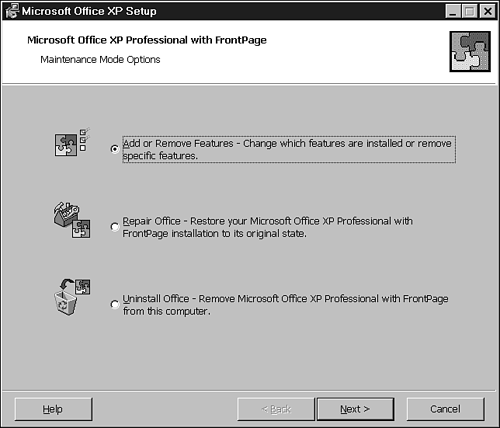Understanding Speech and Handwriting Recognition
Speech and handwriting recognition is a new feature of Office XP, shared among all Office applications as well as Internet Explorer and Outlook Express. Using speech recognition, you can dictate the content of PowerPoint slides or use voice commands to perform basic tasks such as formatting text. Speech recognition requires the use of a speech recognition engine; Microsoft currently offers three engines—in U.S. English, Japanese, and Simplified Chinese.
Note
If you're a native speaker of English from a country other than the United States (such as the U.K. or Australia), the speech recognition engine may not work as well for you because it's trained to recognize American accents.
Using handwriting recognition, you can “write” using a handwriting input device, such as pen stylus and tablet (or even your mouse), and have your written text transcribed into typed text in PowerPoint. Handwriting recognition requires the use of a handwriting recognition engine. Microsoft currently offers five engines—in U.S. English, Japanese, Simplified Chinese, Traditional Chinese, and Korean.
The uses and advantages of both speech and handwriting recognition are numerous, with the most important being the ability to cut down on keyboard and mouse time while still remaining productive. These tools are an acquired taste, however, and may take some time to get used to. If you're interested in seeing how they could assist in your own productivity, it's worthwhile—and fun—to at least give them a try. Remember though, that speech and handwriting recognition can't be a complete substitute for working with a keyboard and mouse. They're most effective when working in conjunction with these traditional tools if you want to achieve the best results.
Looking at Hardware and Software Requirements
Office XP's speech and handwriting recognition tools have specific hardware and software requirements. They also have specific minimum requirements in terms of computer speed and memory.
Caution
Although you may be able to activate speech and handwriting recognition tools with less than the minimum specified requirements, their performance will be problematic or unreliable.
To use speech recognition, you'll need
A close-talk headset microphone with gain adjustment support to modify microphone amplification for appropriate sound recognition. Microsoft recommends a USB (universal serial bus) microphone.
A 400MHz or faster computer.
128MB of memory or more.
Internet Explorer 5.0 or later.
Windows 98 (or later) or Windows NT 4.0 (or later).
Note
If you're using Microsoft Windows 98, but not the second edition, you'll need to download the Microsoft Active Accessibility Redistribution Kit (RDK) from the Microsoft Web site (http://www.microsoft.com) to use voice commands in dialog boxes.
To use handwriting recognition, you'll need
A 75MHz or faster computer
24MB of memory or more with Windows 98 or ME; 40MB of memory or more with Windows NT 4.0 or later
As a writing tool, a mouse (minimum) or a handwriting input device such as a pen stylus and tablet connected through a serial or USB port (recommended)
Installing Speech and Handwriting Recognition
To install speech recognition automatically, choose Tools, Speech from the menu bar and then proceed with the step-by-step setup guidance. To install handwriting recognition, you'll need to return to the Office setup CD. You can also install speech recognition from this setup CD.
→For a more in-depth explanation to set up the speech recognition feature, see “Setting Up Speech Recognition” later in this chapter.
To install these features from the Office XP CD, follow these steps:
Insert the Office XP Setup CD in your CD-ROM drive to reopen the Microsoft Office Setup dialog box (see Figure 8.1).
Select the Add or Remove Features option button, and click Next to continue.
Click the down arrow next to Speech and/or Handwriting and choose Run from My Computer from the menu that appears. Figure 8.2 illustrates both speech and handwriting recognition installed.
Note
If you want to uninstall either of these features, choose Not Available from the menu.
Once you install speech and handwriting recognition for one Office application, it's available in the other Office applications as well.


